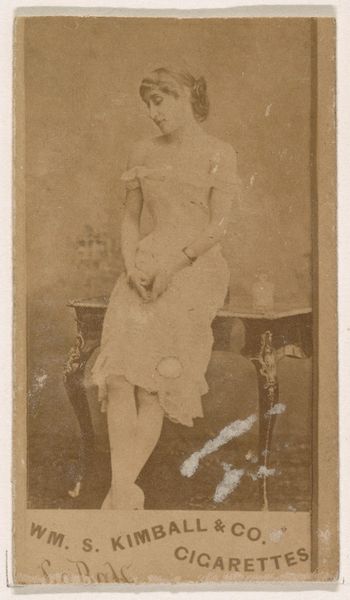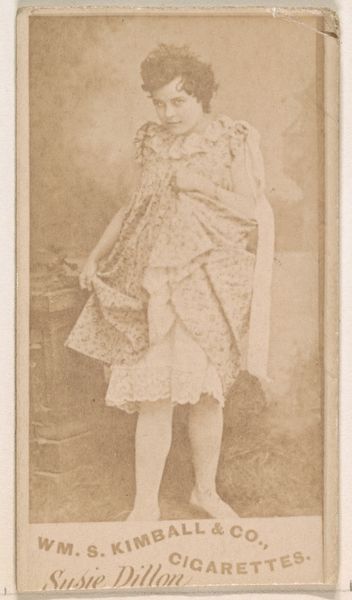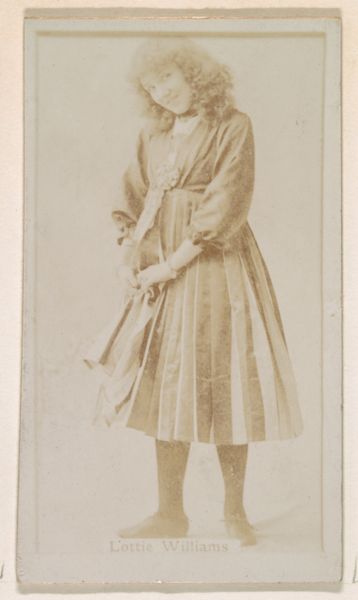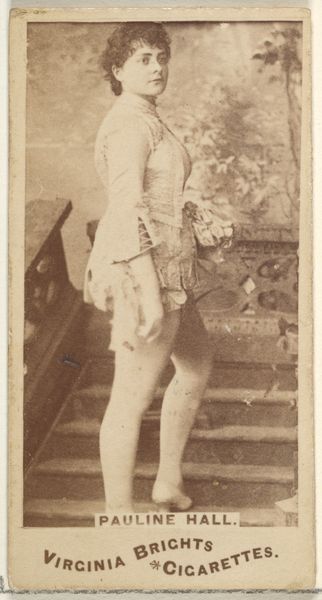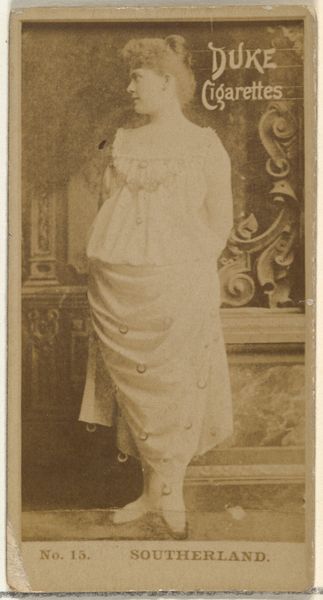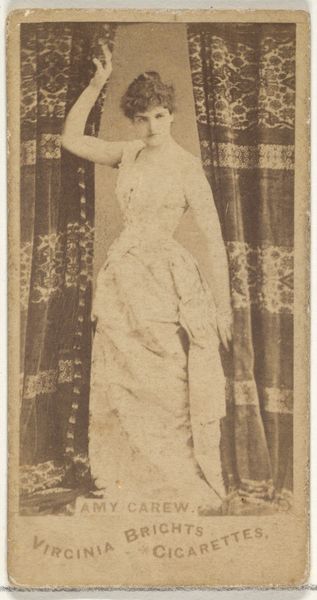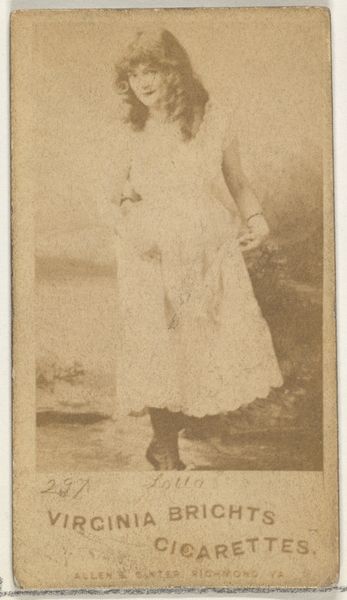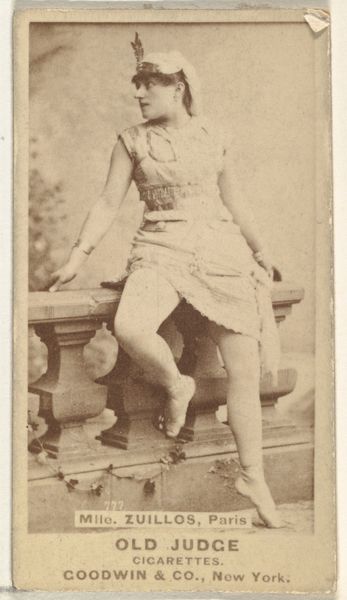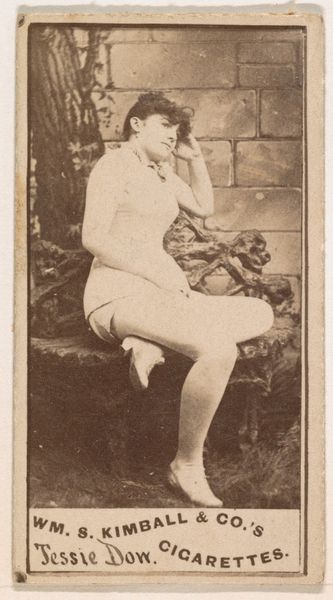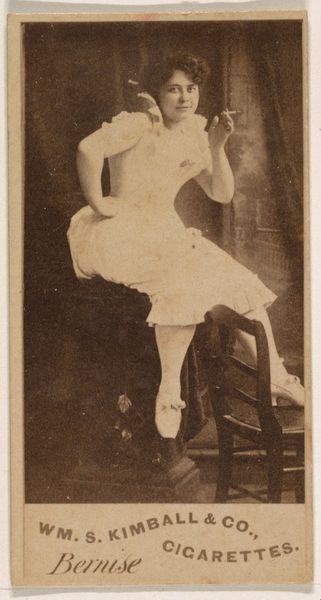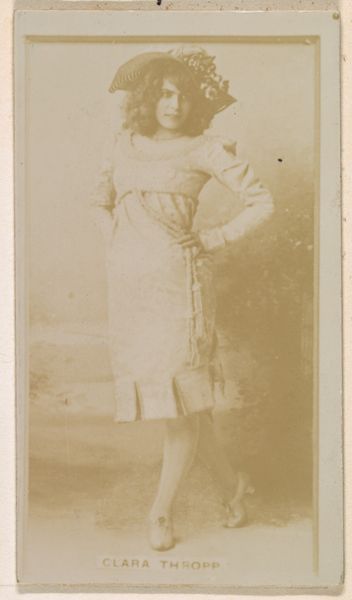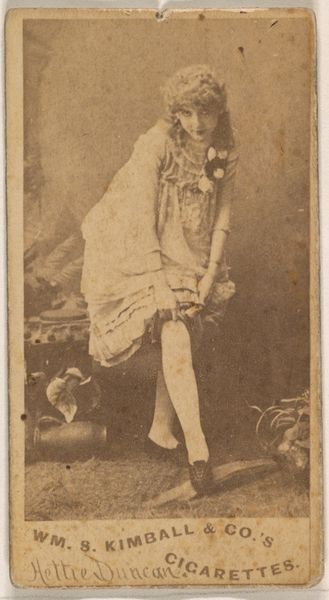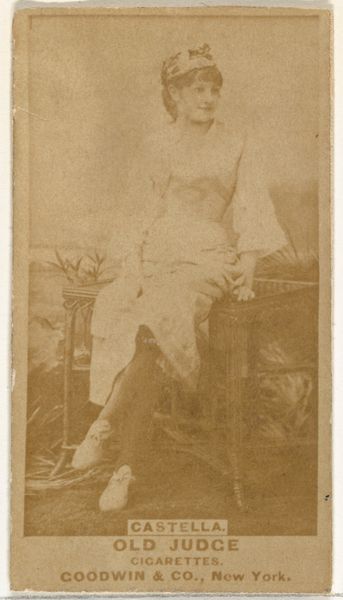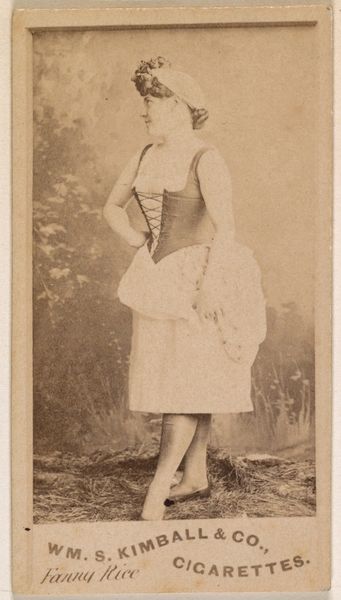
Florence Baker, from the Actors and Actresses series (N45, Type 1) for Virginia Brights Cigarettes 1885 - 1891
0:00
0:00
drawing, print, photography
#
portrait
#
drawing
# print
#
photography
#
19th century
Dimensions: Sheet: 2 3/4 x 1 3/8 in. (7 x 3.5 cm)
Copyright: Public Domain
Editor: So this is a trade card featuring Florence Baker, likely made between 1885 and 1891, as part of the "Actors and Actresses" series for Virginia Brights Cigarettes. It looks like a photographic print, probably small, almost sepia-toned. What's interesting is how a seemingly innocent portrait of an actress becomes a marketing tool. What strikes you about this image in terms of its broader context? Curator: Well, the image itself, while appearing simple, reveals much about the cultural landscape of the late 19th century. We see the rise of consumer culture, where even artistic and theatrical personalities are commodified to sell products. Ask yourself, how does the distribution of these cards through cigarette packs democratize or perhaps cheapen access to images of celebrated figures? Editor: That's a great question! I guess I hadn’t considered how widespread these images became, basically attached to everyday objects. Did this type of marketing have an effect on the public's perception of celebrities, making them more accessible or perhaps diluting their artistry? Curator: Precisely. The very act of associating Florence Baker with a brand of cigarettes interweaves her image with the habit of smoking. The politics of imagery are always at play, whether consciously acknowledged or not. We should consider the institutional role Allen & Ginter took by publishing this portrait; do you see it as a patronage of the arts, or commercial exploitation? Editor: That’s a difficult line to draw. On one hand, it brings visibility to Florence Baker, but it's visibility tied to commerce. I'd say it's primarily commercial exploitation, masking itself as appreciation for the arts. It's fascinating how a simple portrait becomes a window into social and cultural history. Curator: Indeed. These objects, seemingly trivial, are in fact revealing about the social structures that produced them and the public roles that they serve, giving them an extraordinary significance to contextualize 19th century advertising!
Comments
No comments
Be the first to comment and join the conversation on the ultimate creative platform.
